History
- Karandeniya Mr. Patthini Deva Gunasena
- Rathgama Mr. P. H. Lionel de Silva
- Rathgama Mr. M. D Dhanapala
- Weragoda Mr. Ranjith Gunasekara
- Batapola Mr. Peduru Hewa Gunasena
- Kalupe Mr. S Pawarasiri de Silva
- Akurala Mr. Santon Jayaratne
- Kuligoda Mr. W. P G. A. Karunasena
- Wewala Mr. Munasinghe
- Akurala Mr. D. Tilak Sumedha Mandis
- Venamulla Mr. Tudor Siriwansa
- Aluthgama Mr. Mohammad Mahrup
- Bussa Mr. Aruna Chandra Kantha
- Neluwa Mrs. Amitha Pathmini
- Akurala Mrs.Wijekoon Mudyanselage Sandhya Wijekoon
- Mr. W. Ranjith de Silva, Kandegoda
- Mr. M. Anil De Silva, Akurala are those dear Mr. and Mrs.
A few of us mentioned above have passed away. We pray for them to rest in peace and hope that all the rest of us in our company will be blessed with blessings and prosperity.
Apologies for omissions or omissions of names that should be published here.
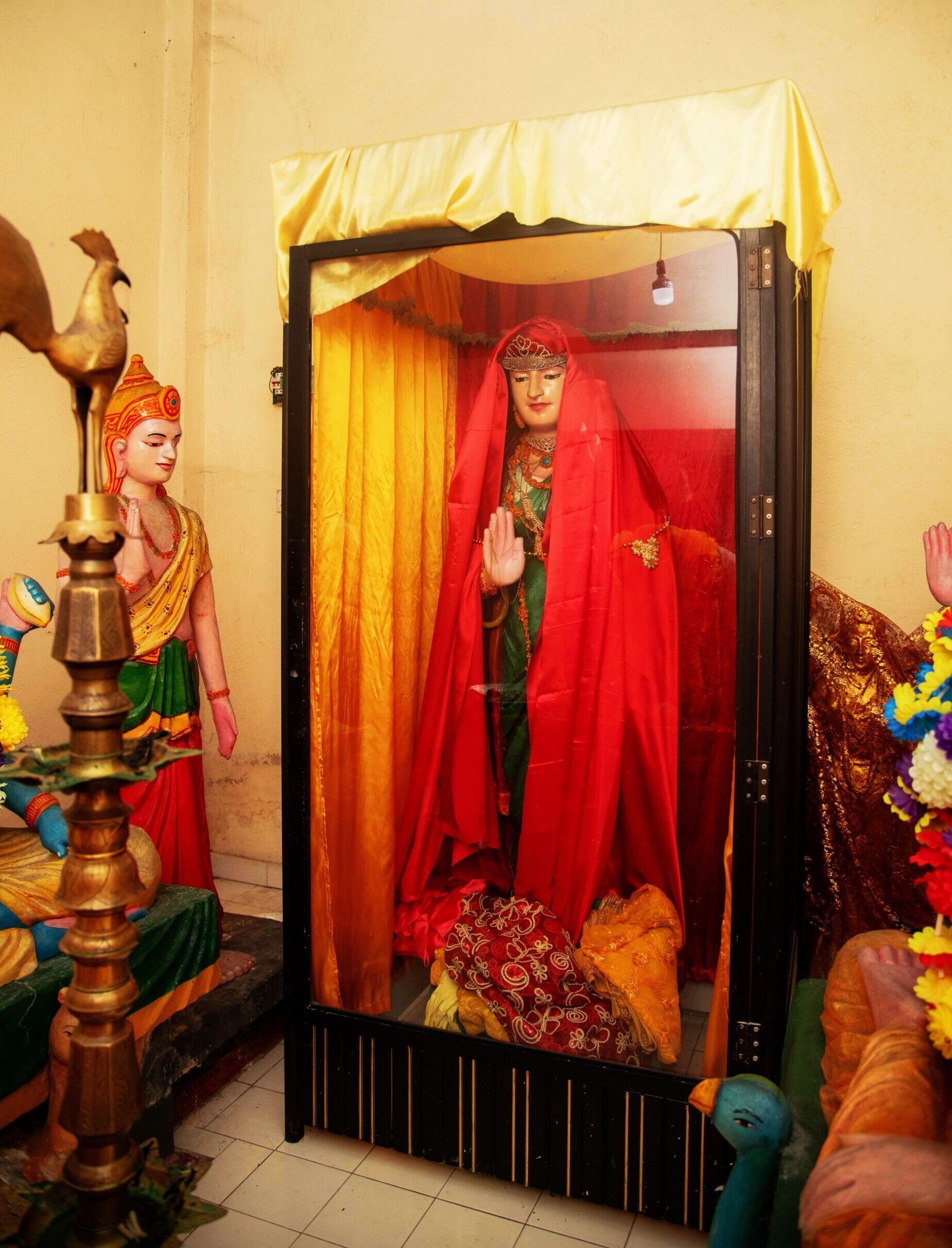
The life journey of Goddess Pattini
The two suns and moons are of the main planets and stars, of the main gods and goddesses of the Sadev world, Sakdev, of the main gods and goddesses of Bamba Lo Thala Vasi Maha Bambu, of the main Bamba deities, of demons, demons, human beings, etc. “Kakusanda” Buddha’s Day by continuously offering Chivara Katina Vastu, “Konagama” Buddha’s Day by continuously offering Chivara Pindapatha Pooja, “Kashyapa” Buddha’s Day by Chivara Pindapatha Senasana Pooja, “Gautama” Buddha’s Day Katina Chivara Pindapatha by continuously offering “Gautama” Buddha, who received the title of “Pattini” goddess after continuously offering offerings from the four sides of Senasana Gilana Patcha, has entered the divine plane through “Seenigama” gate.
Kinship relationships
She has seven brothers. Those are called Devol Dev Satkattuwa. Patthini Deva Mata is the elder sister of Devol Sat Kattu.
පෙරුම් පුරමින් කඨින දානය පුදා වැඳ
කකුසඳ බුදුන් හට
නුඹ ය පත්තිනි දෙවිඳු වෙන කල අපි
දෙවොල් දෙව් වෙලා එක ලට
නුඹ ද අක්කේ සිටින තැනකට අපිත් එන්නම්
ගිරි තලෙහි සිට
වරං දීපුව එසක් දෙවියෝ පතිනි දෙවිඳුය
තොට පෙනෙන් නට
The poem suggests that she had created a mansion called “Senigama Port” and lived there,
Coming to Sri Lanka
The Jaya Sri Maha Bodhi tree which had helped Gautama Buddha brought some seeds as a gift and planted them in Ruhunu, Maya, and Pihiti, in Sri Lanka. They grew well in the ground called Porana Bo Gaha Pitiya, also known as Akurala, which is also shown in evidence files.
Since she made it mandatory to worship the Bodhi, she could not sacrifice her life due to intense love, so it is possible to think that she took off a pair of gold bangles or a pair of golden Gigiri Salans from her hands and treasured them at the foot of the Bodhi. A bo tree that grew from this bo tree seed in the garden in front of Abhinavarama was also destroyed after about 300 years of lasting. The Bodhi tree, which was the mother tree of that Bodhi tree, that grew on the ground of the Pattini Temple, lasted until about 1610, and according to the impermanent Dharma, it was destroyed and the trunk rotted and fell to the ground.
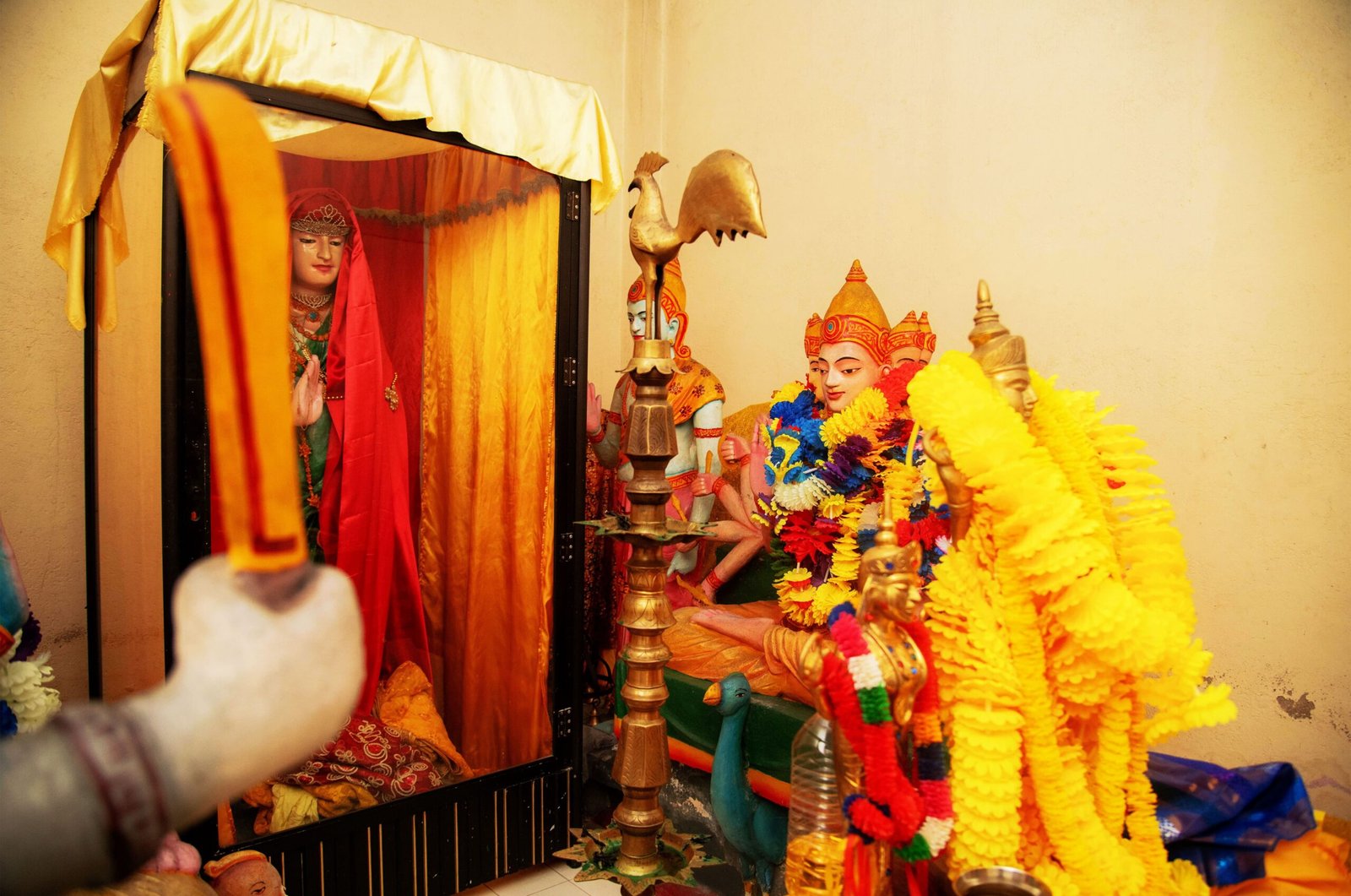
Kumbuk tree
Currently, when I first saw the Kumbuk tree near the bo courtyard of the Akurala Abhinavarama temple and the Bakmi tree in the Pattini temple grounds, the Kumbuk tree was no bigger than a betel nut. That Kumbuk tree is currently as tall as the Bakmi tree.
The age limit of that Kumbuk tree is about 90 years. If so, the age of the Bakmi tree should be about ten times older than the above-mentioned tree.
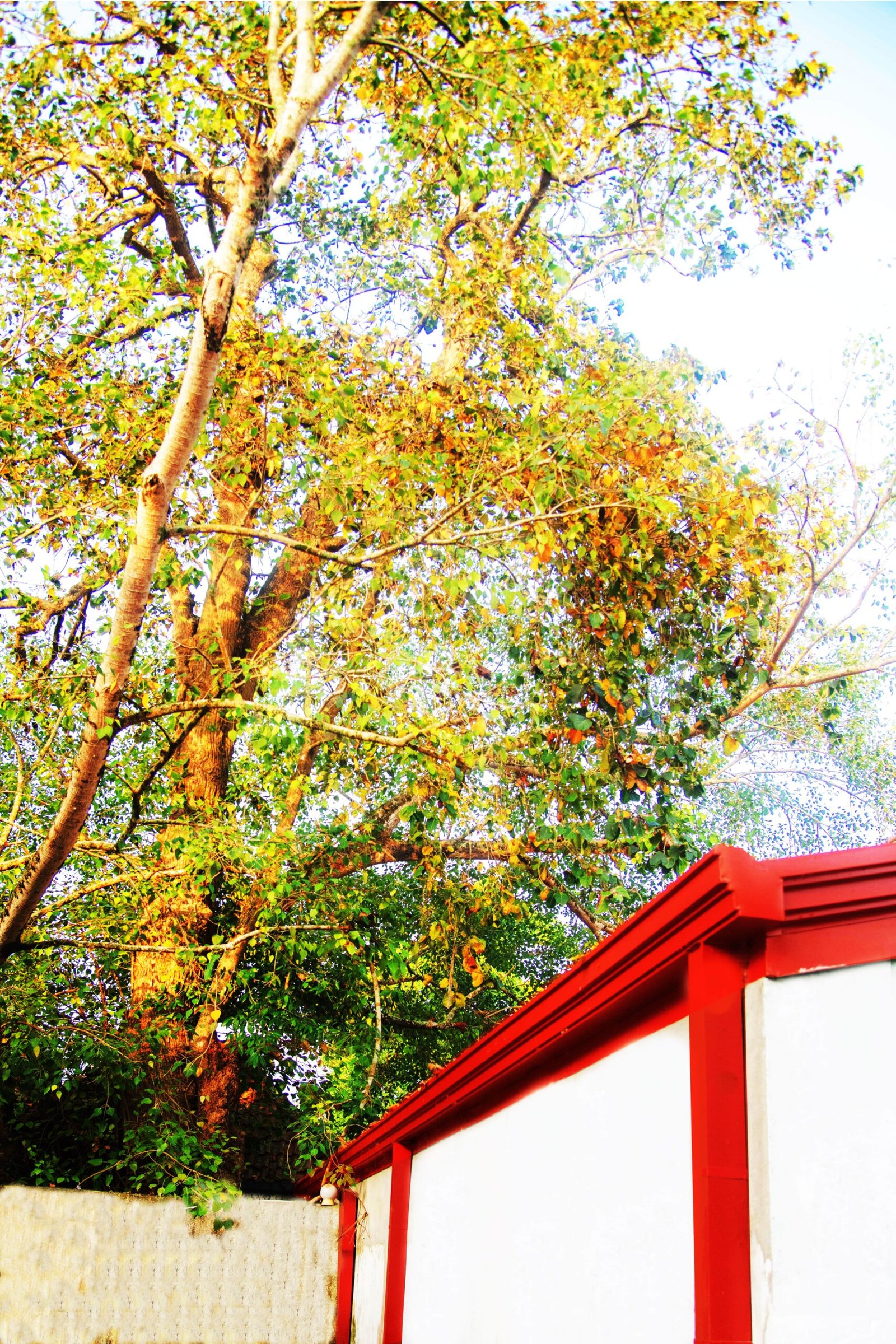
Old Bakmi tree
A Bakmi sapling or a Bakmi stick may be planted as a symbol to identify the Bodhi as the home place created for worshiping her, or it may be thought to have sprouted by force of will. It feels like it’s after Bodhi tree.
If the soru tree, which is said to have been planted at the Weragoda temple, sprouted and sprouted till now, then there is no doubt about the Bakmi tree. A tree is more than fifty feet tall and twelve feet in circumference. However, the height of this Bakmi tree has not changed much in my entire life that I have seen. Admittedly, this tree is more than nine hundred years old.
This is how the Golden bangle couple, who feel they have treasured the Bodhi tree, have met. That is, an early ancestor of the Thusewwa Handi generation came up with the spade of soil when he was clearing land for cultivation about 350 years after the destruction of the old Bodhi tree king’s impermanent doctrine. Acknowledging that it belonged to Goddess Pattini, he placed it in a small clay chamber and celebrated it by offering sacrifices.
The bangle couple, who have been offering gifts from generation to generation, have recently been taken care of by the mother Deva Yalis Hami Upasika, the wife of that grandfather and also did almsgiving.
Encountering Golden Bangles
Auxiliary well
I will also give a brief introduction about the well. Charles Seneviratne, M.P. Wimalatissa, who worked as the judicial and vice-prefect of our village, and M. P. Zoysa, who was a minister, dug a small well with coconut shells when they were 10-year-old children. Thousands of people drink water from that well during the auspicious season or use it for work, there is no shortage or spoilage. Before the water system came, most of the villagers got drinking water from this well. Although this well was filled by the last tsunami, it was cleaned after one spraying. It is because of the earth-touching power of Goddess Patthini.
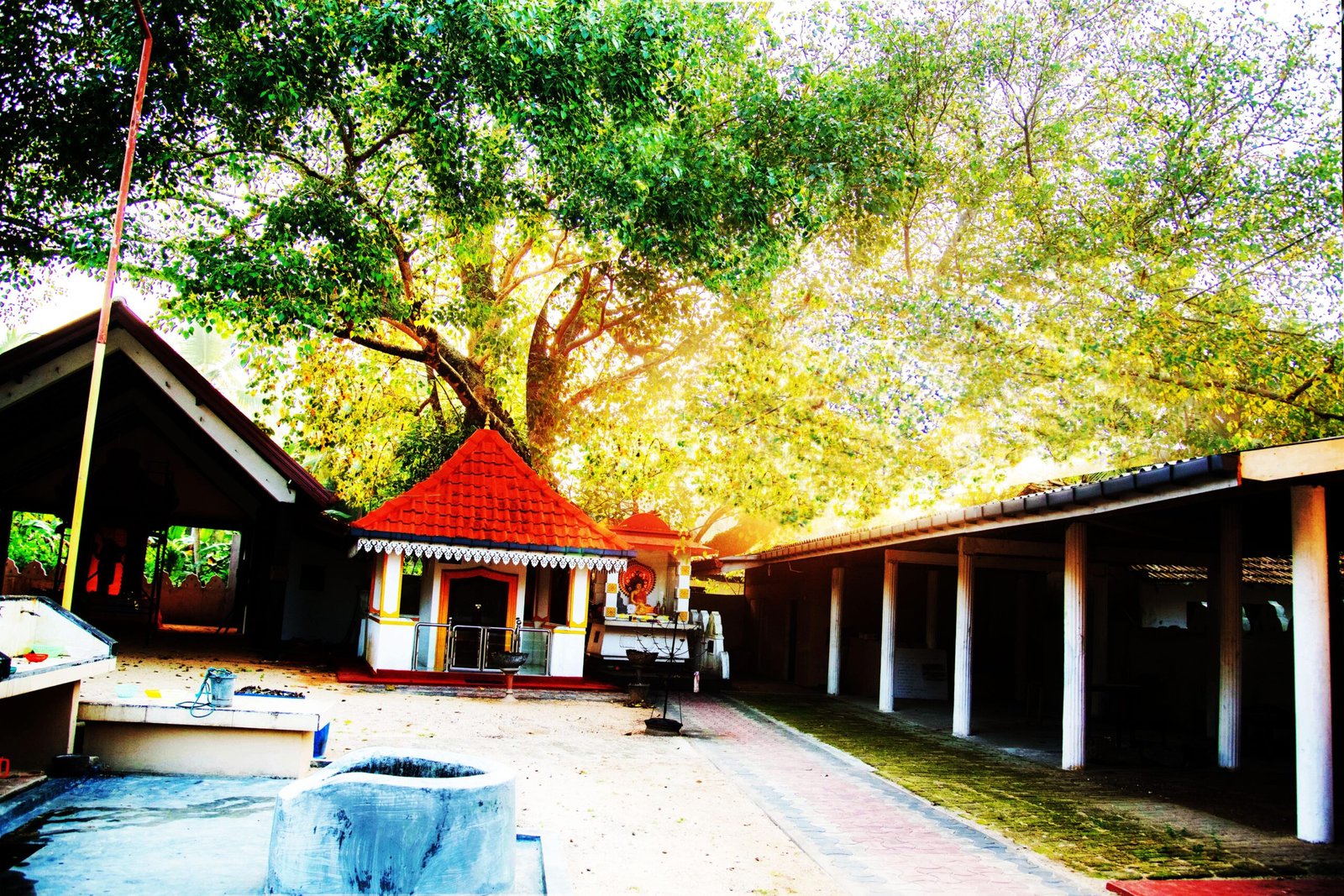
Akurala
The activities of the Village Shantikarma Yaga and Deva charity, which continues year after year at the “Pattini Temple”, will begin as follows.
According to good auspiciousness, prayers are offered in the temple, and offerings are made to the god of Bakmi Bhuma. It ends on the next fortnight from the date of planting. Yahan is tied two days before Poya Day.
On the night before the Poya day, a donation of milk rice is also held and the “Yaga” is performed by bringing the “Halan” of goddess Pattini at the Yaga mandir where the yahan has been tied. Its components are,
Pattini Dance, Thelme Dance, Bambara Dance, Vahala Dance, Gara Dance, Burning Mustard, and many Shanti Karma Yagas followed by Buddha Pooja and Pooja for gods. Then the Buddha Puja and Deva Pooja are held and the devotees are asked to accept the deity’s alms, and after the opportunity to shake coconuts to seek blessings, the festival comes to an end. It is needless to say this Pattini temple and the village religious sacrifice festival and charity activities held there are world famous. May you receive the help of Goddess Pattini who was miraculously born from mango, flower, and water drop! Several perahara functions have also been held in this temple.
There was an ancient custom of “Peli Yama “ for controlling disease spreading in the countryside. It starts after midnight.
Some dressed as devils using fire, torches, drums, tins, etc. Mothers keep their children in the house and close the doors without letting them see the children.
The mothers’ feelings were that those dangerous demons had invaded the house and made the children sick. It brings Seth Shanti to Gampalassa.
Angampodi Asaneris de Silva was the organizer of this procession. As far as I have heard, this procession has been held twice. Even though my mother put me in the house and closed the door, I watched once through the window. I say that, it is appropriate to hold such processions when there is danger in the village. The procession has been held for the third time without age selection.
Peli Yame perahara at Pattini temple
Carved idols of Patthini temple
The idol of Goddess Pattini in the temple is about 85 years old and was carved by the relatives of the second-stage temple festival organizer.
Apart from that, I mention that the Vishnu, Kataragama, Natha, Saman, Gambhara, Suniyam, etc. sitting there were built during the organization of Nanasena de Silva.
Apart from that, apologize to the devotees for not giving an introduction about the temple including other buildings, covering walls, electrical systems, trees, etc.
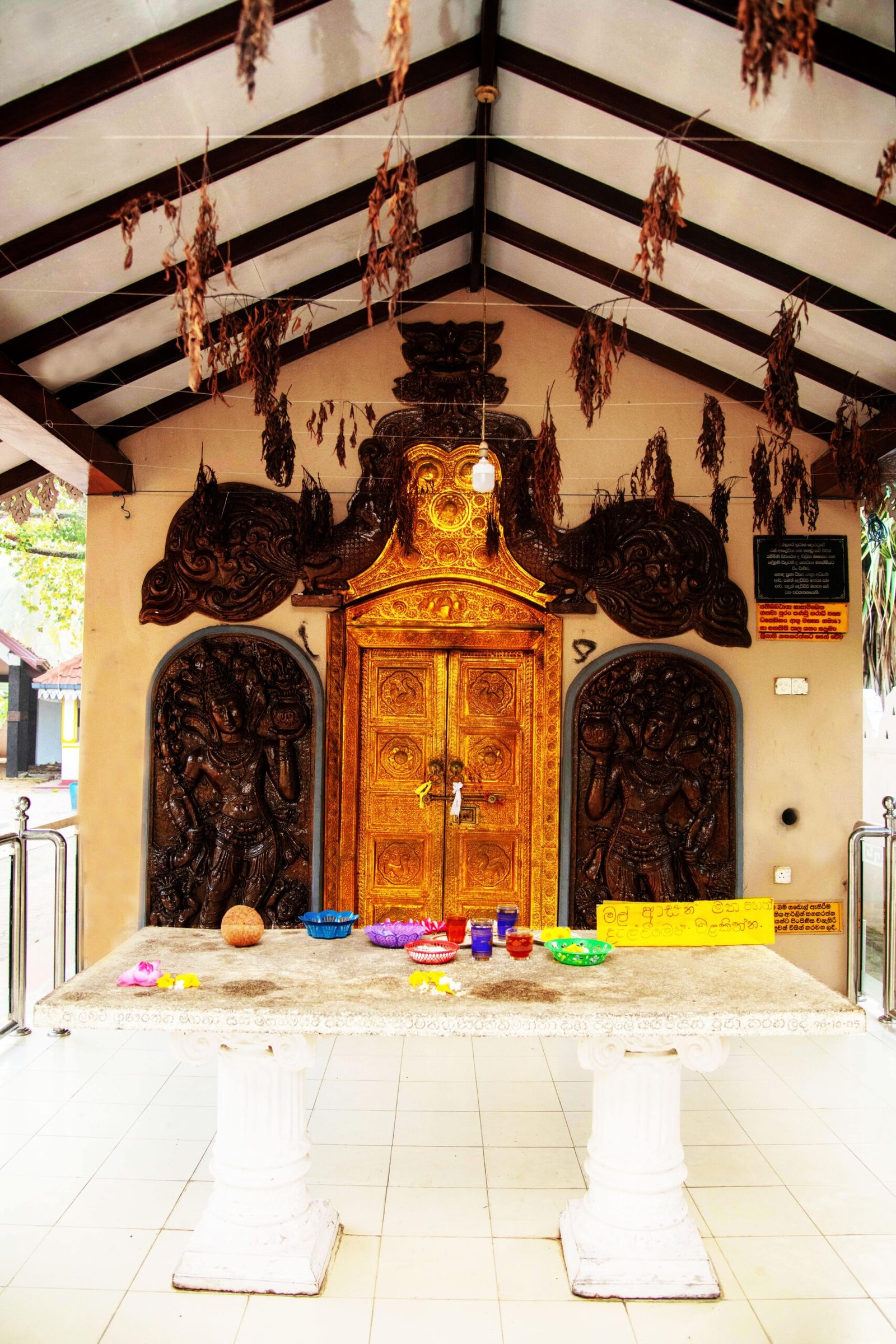
Let's remember
A lot of work has been done in the Patthini Temple. There are also many organizers. Many people have given support in various ways for the village charity work. Many people have applied to Kapu Pattini themes. Also, many people apply. We pray that all the relatives who are not alive, who have touched us, will attain divinity and see Nirvana. Also, we wish everyone who is among us good health.